|
Outside
Bond
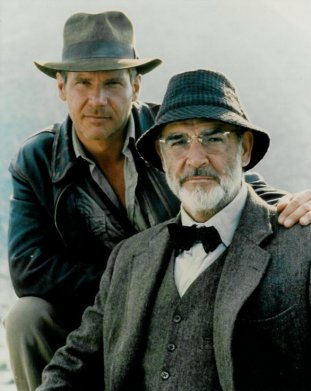
Sean Connery
Sean Connery has been the most successful of all the James Bond actors
outside of Bond. Largely unknown when he made Dr No, Connery mixed his
James Bond days with notable appearances in films like Alfred
Hitchcock's stylish Marnie. The Hill and western Shalako saw
Connery show he could play other characters - if anything Connery
seemed happy and liberated to play against his Bond persona. The
Anderson Tapes showed that Connery wasn't afraid to look his age and
explore new roles. The Offence and Zardoz, which both followed Diamonds
Are Forever, were ample proof that Connery was tired of Bond and
prepared to go away from that image.
The rest of the seventies was a mixed bag for the now 007 free Connery.
The Man Who Would Be King was his high point, paired with good friend
Michael Caine. Robin and Marian was an interesting if not completely
successful new spin on the Robin Hood legend and Meteor, one of his
biggest duds and return to the mainstream, was a complete disaster, if
you'll pardon the pun.
In 1981 Connery agreed to take a small role in Terry Gilliam's Time
Bandits. The film became a cult hit and restored a little of Connery's
star. Time Bandits reminded everyone that Connery still had great
screen presence. The High Noon inspired Outland gave Connery another
solid role in the same year. After Wrong Is Right and Five Days One
Summer Connery returned as James Bond in Irvin Kershner's Never Say
Never Again. The film was beaten by Octopussy at the box-office and
received a mixed reception but the resulting publicity and the aura of
Bond put Connery firmly back on the map.
The interesting The Name Of The Rose and the flashy but hollow
Highlander continued the comeback and then Connery won an oscar for his
part in Brian De Palma's flamboyant The Untouchables. The Untouchables
sealed Connery's legacy as one of his era's major film stars. Like old
fashioned stars he was more or less the same in many films. Accents
were never a Connery strength!
His longevity as an actor confirmed, Connery had shown great skill in
moving beyond James Bond. His iconic status was evident when Steven
Spielberg had to cast someone as Indiana Jones' father in Indiana Jones
and the Last Crusade. There was only one man for the job. The original
James Bond!
The nineties was a so-so decade for Connery in terms of quality. Family
business and Just Cause gave him meaty roles but neither film was
memorable. Medicine Man and The Hunt For Red October were solid
team-ups with director John Mctiernan but nothing amazing and First
Knight and Dragonheart were ho-hum child friendly fodder. The Avengers
bombed and the terrible Finding Forrester saw Connery giving a familiar
performance as a slightly cranky mentor. The Rock was fun though.
It's a shame that the artless mauling of Alan Moore's graphic novel,
The League of Extraordinary Gentlemen, may well be Connery's last film
though it must be said, even older, Connery makes for a commanding and
charismatic presence in the film. He is the most respected out of all
the previous Bond actors for his body of work.
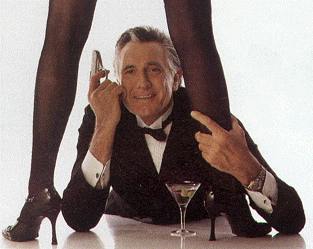
George Lazenby
Lazenby was up a certain creek without a paddle when he quit James Bond
in 1969. Wrongly advised that James Bond was finished, Lazenby sought
to build a new career but quickly realised that without a CV good
acting jobs are elusive. Without a back ground as an actor, and without
the trump card of being James Bond, his career quickly slipped down the
plughole. A future making Hong Kong action movies with Golden Harvest
briefly beckoned after Lazenby starred in The Shrine Of Ultimate Bliss
and The Man From Hong Kong. Lazenby planned to make several films with
Bruce Lee and become a seventies action icon but Lee's premature death
ended these plans and the Hong Kong action boom.
Lazenby, who became independently wealthy through real estate ventures,
continued to pick up small parts here and there. Hawaii Five-O, General
Hospital. He made a cheeky appearance as a 'James Bond type' spy in a
Man From Uncle tv movie and made films with titles like Master Ninja
II. Television work in the eighties included that timeless classic
Baywatch, Alfred Hitchcock Presents, and Freddy’s Nightmares.
In
1990 he played Jor-el in Superboy.
A neverending series of Emmanuelle films engaged Lazenby for much of
the early nineties. Other bits and pieces included Team Knight Rider(!)
and supplying a voiceover for the Batman Beyond animated series.
Perhaps Lazenby's finest post-Bond moment came when he starred with the
sleuthing Van Dyke family in the mighty
comedy/detective/hospital
show Diagnosis Murder!
Lazenby, more than any other ex-Bond, has cashed in on his Bond image
for cameos and appearances. It's ironic that he was the quickest to
abandon the part.
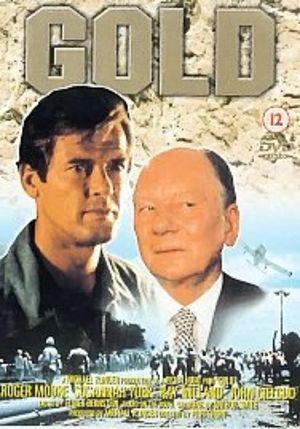
Roger Moore
Roger Moore was a widely known and popular actor when he became James
Bond, largely for his television work in The Saint. a team-up with Tony
Curtis in The Persuaders was fun but the series didn't last. His first
non-Bond film after taking the role saw him play a typically suave
Roger Moore type character in Peter Hunt's adventure film Gold. Rather
than seek out different roles seemed to spend most of his time outside
of Bond in the seventies making some other sort of adventure film,
usually with an all star cast of friends. Shout At The Devil, Escape To
Athena and The Wild Geese. In The Wild Geese Moore was required to play
a tougher character than usual. His character's ruthlessness in a few
scenes was a contrast against his lighter Bond persona. Moore also
managed to play another iconic hero when he starred with Patrick Macnee
in a Sherlock Holmes television film.
After yet another war/adventure film, The Sea Wolves, Moore had one of
his more fun roles in North Sea Hijack, playing an eccentric, cat
loving, counter-terrorism expert called Rufus Excalibur ffolkes. With a
woollen hat and beard Moore finally began to play against his Bond
image before sending it up with a cameo in the all star car chase farce
The Cannonball Run.
As his Bond days drew to an end, and his work for UNICEF increased,
Roger Moore appearances in films became more infrequent. He had an ill
advised cameo in The Curse Of The Pink Panther and his post-Bond team
up with Michael Caine in Bullseye! was notoriously bad. Films like
SpiceWorld are best forgotten but Moore got a half-decent role as a
caddish adventurer and conman in The Quest alongside the legend that is
Jean Claude Van Damme.
Bed and Breakfast, finally released in 1992, gave Moore one of his very
best roles alongside Collen Dewhurst and Talia Shire. The pretty Maine
seascapes gave the film an interesting backdrop and Moore showed that
his charm was still there in one of his most assured performances.
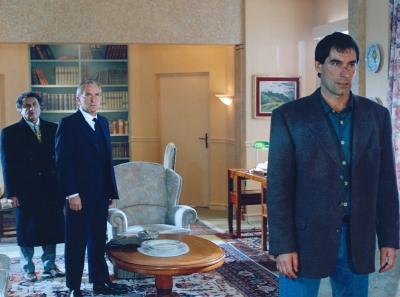
Timothy Dalton
Timothy Dalton wasn't widely known when he took the part of James Bond.
His cv was littered with tv-mini series parts and appearances in
television shows. More than anything he was a stage actor and seemed to
prefer and enjoy more varied work in that area. His West End schedule
led him to decline the James Bond offer when it first arrived.
He was best known for playing the dashing Prince Barin in 1981's campy
cult favourite Flash Gordon. Dalton's moody good looks had led him to
be cast in a number of undemanding playboy/romantic/period/ roles. Sins
with Joan Collins, Florence Nightingale and Jane Eyre. The Doctor and
the Devils saw Dalton forced to don period clobber yet again.
Dalton's first film (released) outside of Bond was the well meaning but
slight Hawks with Anthony Edwards. Dalton fared well in his part as a
terminally ill patient who steals an ambulance and heads for Amsterdam,
determined to make the best of his situation. Brenda Starr, which
Dalton shot before The Living Daylights, was a complete bomb, Dalton
again playing an old fashioned romantic hero character.
The King’s Whore showed that Dalton was unafraid to move away
from the Bond persona and image, and Rocketeer, released in 1991, gave
Dalton the chance to show that he could actually be funny. Playing
Neville Sinclair, a Nazi spy, Dalton had great fun and patterned his
villain on Errol Flynn in this underrated and enjoyable film. A number
of Bond fans noted that Dalton was engagingly dashing, funny and
relaxed - traits that some had lamented as absent in Licence To Kill!
The interesting British tv mini-series Framed saw Dalton play against
Bond again with another morally dubious character, here alongside a
young David Morrissey. Whereupon Dalton's career seemed to lose a bit
of fizz. An appearance in the television series Tales From The Crypt in
1994 suggested that Dalton was treading water post-Bond and Children's
fare Saltwater Moose and The Beautician and The Beast confirmed that
Dalton's film career was not exactly flourishing, or going anywhere
interesting. More tv work would follow including Rhett Butler in
Scarlett and Julius Caesar in the 1999 TV movie Cleopatra.
In 2003 Dalton finally sent up his James Bond image in Looney Tunes:
Back in Action. He also returned to theatre to play Lord Asriel in the
stage version of His Dark Materials to great acclaim, back to where he
had been most successful and fulfilled before James Bond. He had come
full circle.
In 2007 Dalton returned to the mainstream in Simon Pegg's Hot Fuzz.
Dalton's Bond status and cult roles in films like Flash Gordon and
Rocketeer still remembered and enjoyed by a younger generation.
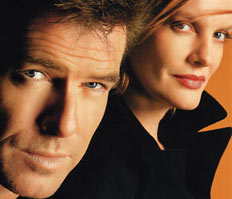
Pierce Brosnan
Pierce Brosnan's career was flagging when he landed James Bond. Big
screen opportunities had slowed and he seemed mostly embroiled in
making Alistair
MacLean tv movies as UN agent Mike Graham. Graham was like James Bond
without the budget and seemed to sum up where Brosnan was and
simultaneously remind us that Brosnan was most famous for nearly
becoming 007 once. Brosnan needed Bond big-time to jumpstart his
stalled career. In 1994 he finally got the nod.
When he got the part Brosnan used his clout as Bond to carve out one of
the more successful and varied careers of the ex-Bond actors. Soon he
would be working with some of the famous directors going and with his
production company to choose projects that interested him.
After GoldenEye in 1995 Brosnan worked with Tim Burton on Mars Attacks!
and played the lead in disaster film Dante's Peak. He wasted no time in
moving from the small screen back into film. John Mctiernan's The
Thomas Crown Affair gave Brosnan one of his better roles and cemented
the fact that he was finally a star. He followed The World Is Not
Enough with John Boorman's The Tailor of Panama, a film in which he
happily played against his James Bond image. Evelyn, a pet project,
followed. Brosnan, like Connery before him, was able to use Bond to get
films he wanted to do made.
After Die Another Day, Brosnan continued with romantic comedy Laws of
Attraction with Julianne Moore and After the Sunset with Woody
Harrelson. The Matador continued his move away from Bond and with the
official confirmation that his services were no longer required by Eon,
Brosnan had entered a less lucrative but perhaps more satisfying phase
of his career.
Seraphim Falls illustrated that Brosnan was now old enough to attempt
character roles. His career has been marked by troughs and ups and
downs but Brosnan has undoubtedly emerged from Bond in a much stronger
position than when he went in.
- Greg Haugen
c
2007
Alternative 007
|

|


